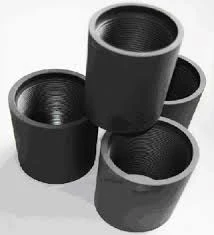- Afrikaans
- Albanian
- Amharic
- Arabic
- Armenian
- Azerbaijani
- Basque
- Belarusian
- Bengali
- Bosnian
- Bulgarian
- Catalan
- Cebuano
- Corsican
- Croatian
- Czech
- Danish
- Dutch
- English
- Esperanto
- Estonian
- Finnish
- French
- Frisian
- Galician
- Georgian
- German
- Greek
- Gujarati
- Haitian Creole
- hausa
- hawaiian
- Hebrew
- Hindi
- Miao
- Hungarian
- Icelandic
- igbo
- Indonesian
- irish
- Italian
- Japanese
- Javanese
- Kannada
- kazakh
- Khmer
- Rwandese
- Korean
- Kurdish
- Kyrgyz
- Lao
- Latin
- Latvian
- Lithuanian
- Luxembourgish
- Macedonian
- Malgashi
- Malay
- Malayalam
- Maltese
- Maori
- Marathi
- Mongolian
- Myanmar
- Nepali
- Norwegian
- Norwegian
- Occitan
- Pashto
- Persian
- Polish
- Portuguese
- Punjabi
- Romanian
- Russian
- Samoan
- Scottish Gaelic
- Serbian
- Sesotho
- Shona
- Sindhi
- Sinhala
- Slovak
- Slovenian
- Somali
- Spanish
- Sundanese
- Swahili
- Swedish
- Tagalog
- Tajik
- Tamil
- Tatar
- Telugu
- Thai
- Turkish
- Turkmen
- Ukrainian
- Urdu
- Uighur
- Uzbek
- Vietnamese
- Welsh
- Bantu
- Yiddish
- Yoruba
- Zulu
what are the differences between casing and tubing?
Differences Between Casing and Tubing in Oil and Gas Operations
In the world of petroleum engineering, understanding the components and systems involved in drilling and production is crucial. Two key elements in this process are casing and tubing. While both are essential for the success of oil and gas operations, they serve distinct purposes and have different characteristics. This article explores the differences between casing and tubing, delving into their functions, structural attributes, and the roles they play in the extraction of hydrocarbon resources.
Definition and Purpose
Casing refers to the series of steel pipes that are inserted into a wellbore after drilling operations have been completed. Its primary purpose is to stabilize the well, protect it from collapse, and isolate the various geological formations encountered during drilling. Casing also serves to prevent the migration of fluids between different layers of rock, which is vital for both safety and environmental protection. A well is typically lined with multiple casing strings, each designed for specific depths and geological conditions.
In contrast, tubing is a smaller diameter pipe that runs through the center of the casing. Its main function is to facilitate the production of hydrocarbons from the reservoir to the surface. Tubing is installed after casing and is designed to withstand the pressure of the fluids being extracted. It allows for the controlled flow of oil or gas, enabling operators to manage production rates and optimize recovery.
Structural Differences
One of the most significant differences between casing and tubing lies in their structural specifications. Casing is typically heavier and has a larger diameter compared to tubing. This robust design is necessary to withstand the high pressures and stress conditions found in the deeper layers of the earth. Casing pipes are manufactured to various specifications, with common sizes ranging from 4.5 inches to 20 inches in diameter, depending on the specific application.
what are the differences between casing and tubing?

On the other hand, tubing is much lighter and has a smaller diameter, usually ranging from 2.3 inches to 5 inches. This difference in size and weight is essential for ease of installation and for allowing fluid flow through the system. Tubing must also be designed to endure the dynamics of production, including thermal expansion, corrosion from produced fluids, and mechanical stresses.
Installation and Maintenance
The installation process for casing and tubing also varies significantly. Casing is cemented in place, which provides additional support and seals off the wellbore to prevent any fluid migration. The cement not only secures the casing but also contributes to the stability of the borehole, which is vital for the well's integrity throughout its productive life.
Once the casing is in place, tubing is then inserted. This process is less complex than casing installation and can often be done with special tools designed for the purpose. Tubing can be easily replaced or serviced without the need to remove the surrounding casing. This flexibility is crucial for maintenance operations because it allows operators to address issues such as wear and tear or changes in production without significant downtime.
Conclusion
In summary, while both casing and tubing are integral to oil and gas operations, they serve fundamentally different roles. Casing provides structural support and isolation within the wellbore, while tubing is essential for extracting hydrocarbons from the reservoir. Understanding these differences is vital for engineers and operators alike, ensuring that they can optimize production efforts and maintain well integrity across the life cycle of the well. This comprehensive knowledge of casing and tubing is key to maximizing resource recovery while minimizing environmental impact.
-
Tubing Pup Joints: Essential Components for Oil and Gas OperationsNewsJul.10,2025
-
Pup Joints: Essential Components for Reliable Drilling OperationsNewsJul.10,2025
-
Pipe Couplings: Connecting Your World EfficientlyNewsJul.10,2025
-
Mastering Oilfield Operations with Quality Tubing and CasingNewsJul.10,2025
-
High-Quality Casing Couplings for Every NeedNewsJul.10,2025
-
Boost Your Drilling Efficiency with Premium Crossover Tools & Seating NipplesNewsJul.10,2025







